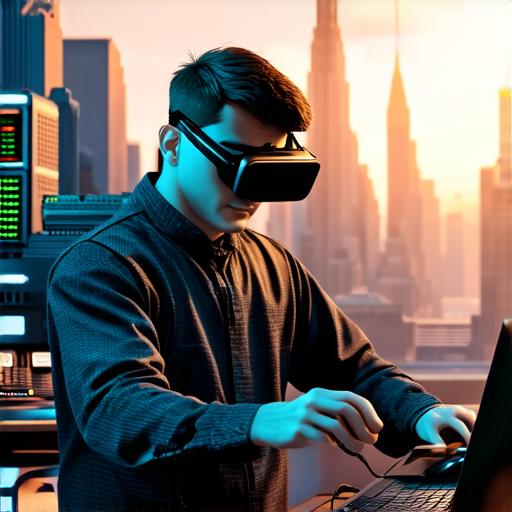Virtual Reality (VR)
Virtual reality (VR) is a technology that allows users to experience a simulated environment as if they were really there. The concept of VR dates back to the 1960s, but it wasn’t until the 21st century that the technology became widely available.
Virtual Reality in the Early Days
The idea of VR can be traced back to the early days of computing. In 1962, Ivan Sutherland, a computer science professor at MIT, created a head-mounted display (HMD) that allowed users to look around in a virtual world. He called his creation “Sword of Damocles,” and it was an early version of what we know as VR today.
However, Sword of Damocles was limited in its capabilities. It only had a single-line display and no way for the user to interact with the virtual environment. In 1968, Sutherland created another HMD called “Sketchpad,” which allowed users to draw and manipulate objects in a virtual world.
It wasn’t until the 1980s that VR technology began to really take off. Researchers at the University of Washington developed a system called “Virtual Worldworkshop” that allowed multiple users to work together in a virtual environment. In 1987, the first commercial VR headset, the Oculus Rift, was introduced.
The Founder of Virtual Reality: Jaron Lanier
While many pioneers contributed to the development of VR technology, one man stands out as the founder of the industry: Jaron Lanier. Lanier is a computer scientist and author who has been working in the field of virtual reality since the 1980s.
In 1985, Lanier co-founded VPL Research, a company that developed the first commercial VR headset, the DataGlove. He went on to work for many other companies in the VR industry, including Autodesk and Silicon Graphics. In 2004, he founded Everywhere, a startup that focused on developing VR applications for mobile devices.
However, Lanier’s most significant contribution to the field of VR was his role as the author of “You Are Not a Gadget,” a book published in 2010. In the book, Lanier explored the dangers of technology and its impact on society, arguing that VR had the potential to revolutionize the way we interact with the world.
Real-Life Examples of Virtual Reality Applications
Virtual reality has many applications across different industries. One of the most well-known examples of VR is gaming. Many popular games have been adapted for VR, including “Beat Saber” and “Doom.” These games provide users with an immersive gaming experience that is unlike anything they can get on a traditional gaming console.
Virtual reality has also found applications in healthcare. It has been used to treat a range of conditions, including anxiety disorders, PTSD, and phobias. For example, the company Virtually There has developed a VR therapy program for patients with social anxiety disorder that allows them to practice social skills in a safe and controlled environment.
Virtual reality is also being used in education. It provides students with an immersive learning experience that can help them understand complex concepts more easily. For example, the company Epic Games has developed a VR platform called Unreal Engine, which can be used to create educational content in a range of subjects, including science, history, and art.
The Future of Virtual Reality: Challenges and Opportunities
Virtual reality technology is still in its early stages, but it has already shown tremendous potential for revolutionizing the way we interact with the world. However, there are also challenges that need to be addressed if VR technology is to reach its full potential.

One of the biggest challenges facing VR is its high cost. Currently, VR headsets and other equipment can be quite expensive, which limits their accessibility to many people. This is particularly problematic in developing countries where access to technology is limited.
Another challenge facing VR is the potential for it to isolate users from the real world. Some worry that if people spend too much time in virtual worlds, they may become disconnected from reality and lose touch with their emotions.
Despite these challenges, there are also many opportunities for VR technology. As the technology becomes more affordable and accessible, we can expect to see it used in a range of new applications across different industries. For example, VR could be used to train pilots or surgeons, or to design new products and buildings.
Conclusion
Virtual reality has come a long way since its early days, and it continues to evolve as technology advances. While the technology is still in its early stages, it has already shown tremendous potential for revolutionizing the way we interact with the world.
